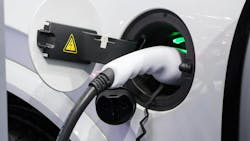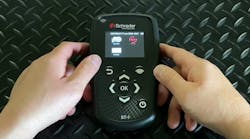If your repair shop is looking to install an EV charger, you may find yourself overwhelmed by the number of brands to choose from. This became very evident while walking the CES 2024 show floor in Las Vegas.
However, before deciding on which brand to go with, you first need to ask yourself which type is best for your business.
For businesses, there are two options: Level 2 (L2) and Direct Current (DC) Fast Chargers.
Level 2 chargers are compatible with 208V and 240V and can fully charge a battery-electric vehicle in four to eight hours or a hybrid vehicle in one to two hours.
DC fast chargers, also referred to as Level 3, can provide an 80 percent charge in under an hour.
“A lot of it has to do with how long the vehicle is going to be in the shop,” said Mike Battaglia, COO of Blink Charging. If you’re looking to provide your customers with a charge while performing lighter services, such as tire rotations, then a DC fast charger would be best because of the quick turnaround time.
For repairs that may take longer, whether overnight or longer, a Level 2 charger would be best.
“What you have to be looking at is the mix of business and how quickly repairs are going to be turning,” he said.
Another important factor to consider, Battaglia noted, is the time it takes to install an EV charger.
“When we talk about Level 2 chargers, it’s a much simpler installation process,” he said. “Typically, the site where you’re installing the charger has enough power so you're connecting the charger directly to the existing electrical panel. So, it's really just about running conduit wire from the electrical panel to the spot and hooking up the charger. The permitting process, the installation process, and the cost associated with doing that is much less than a DC fast charger.”
When installing a DC fast charger, there may be additional setup requirements.
“When you start getting into DC fast charging that's where the challenges come in because we're starting to talk about whether there is enough power available and if there isn't we need to coordinate with the utility company to bring in additional power and that can take a long time,” Battalia said. “The permitting process around DC fast charging is much, much longer and then you get into things like the availability of components such as transformers.”
Ultimately, it could take up to a year before a DC fast charger can be installed, Battalia stated.


